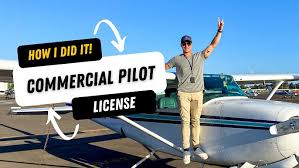In the vast and intricate world of aviation, Pilot Commercial License stand as the custodians of the skies, guiding metal birds through the ether with precision, skill, and unwavering dedication. From the dawn of flight to the present age of supersonic travel, the role of pilots has evolved in tandem with technological advancements, yet their fundamental importance remains unchanged. They are not just operators of machinery; they are commanders of a delicate dance between man and machine, responsible for ensuring safety, efficiency, and comfort for passengers worldwide.
The Evolution of Piloting
The origins of piloting can be traced back to the pioneering days of aviation, when intrepid individuals took to the skies in fragile contraptions, fueled by a mixture of courage and curiosity. In those early years, pilots were adventurers, pushing the boundaries of human exploration and defying gravity with little more than instinct and rudimentary instruments to guide them.
As aviation progressed, so too did the role of the pilot. The advent of commercial air travel brought about a new era of professionalism and specialization. Pilots became highly trained professionals, adept not only at the art of flying but also at navigation, communication, and decision-making in high-pressure situations.
The Responsibilities of Pilots
At the heart of a pilot’s responsibilities lies the safety and well-being of all those onboard their aircraft. Before each flight, pilots meticulously plan their route, taking into account factors such as weather patterns, air traffic, and fuel consumption. They conduct pre-flight checks, ensuring that every system is functioning flawlessly and that the aircraft is airworthy.
Once airborne, pilots rely on a combination of skill and technology to navigate the skies. Modern cockpits are equipped with an array of sophisticated instruments and avionics systems, providing pilots with real-time data on everything from altitude and airspeed to navigation waypoints and weather conditions. Despite these technological advancements, however, the human element remains paramount. Pilots must constantly monitor their surroundings, anticipate potential hazards, and make split-second decisions to ensure the safety of their passengers and crew.
The Challenges of the Skies
Flying is not without its challenges, and pilots must be prepared to confront a wide range of obstacles during their journeys. From adverse weather conditions and mechanical failures to air traffic congestion and communication issues, every flight presents its own set of challenges that must be overcome with skill and professionalism.
Furthermore, pilots must contend with the physiological and psychological demands of long hours spent in the cockpit. Fatigue, stress, and jet lag are constant companions for those who ply the skies, requiring pilots to maintain a high level of physical and mental fitness at all times.
